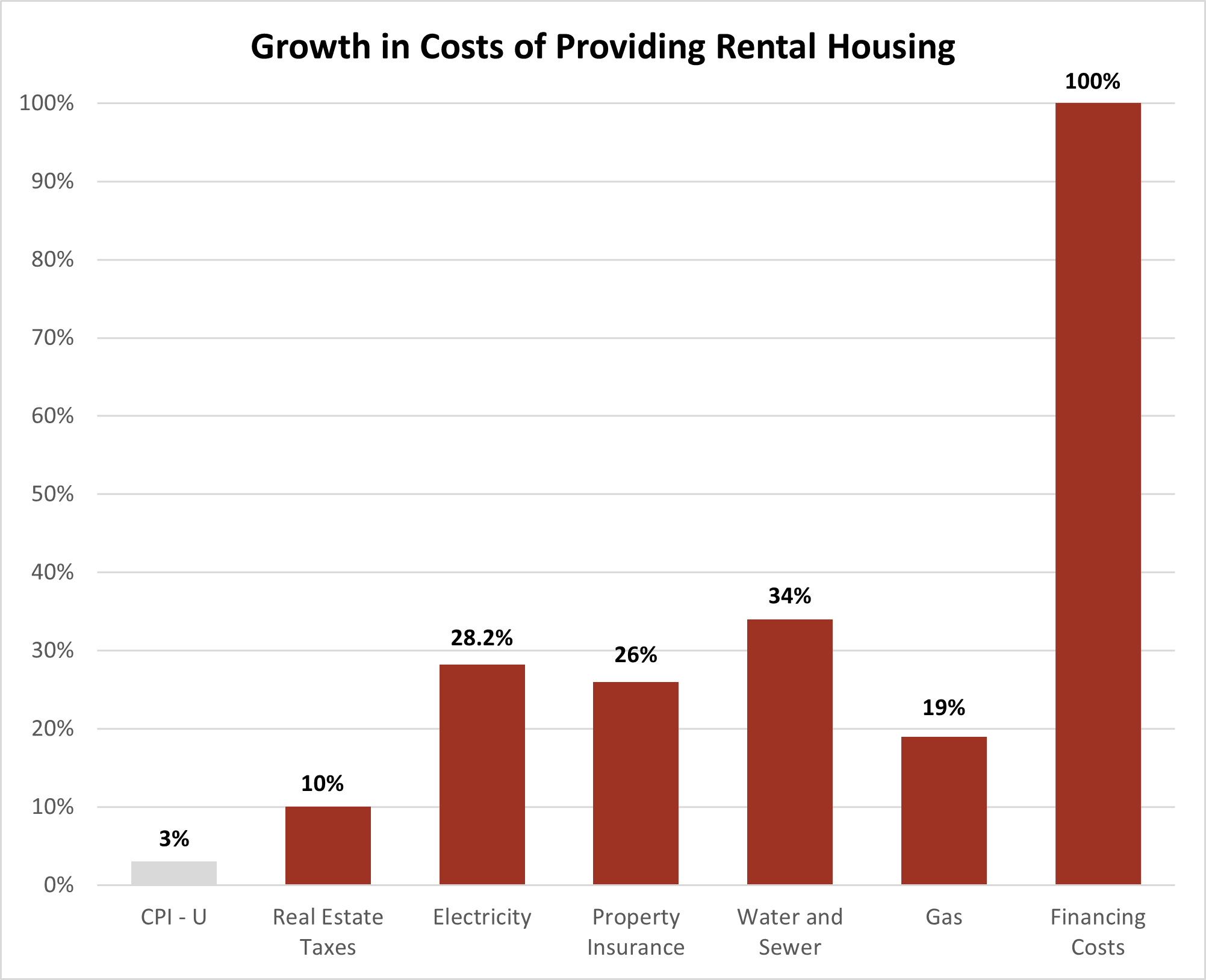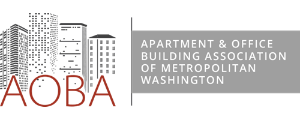A Looming Crisis Part I: Operating Costs in Rental Housing are Skyrocketing
This three-part series will break down AOBA's report on the state of multifamily rental housing in the District entitled, Looming Crisis: The Residual Impacts of the COVID-19 Pandemic on Rent-Controlled and Market Rate Affordable Rental Housing in the District of Columbia. The report analyzes the rent delinquency crisis plaguing multifamily housing in the District.
Extended court timelines have resulted in massive tenant delinquencies that have acutely and profoundly impacted the District’s market-rate affordable and rent-controlled housing stock, threatening their viability. Without corrective policy action from the DC Council and the courts, these properties risk financial failure and bankruptcy or forced sales to companies intent on redeveloping and repositioning them, which would effectively remove them from the District’s affordable housing stock. Lower-income district residents would be harmed the most by the resulting displacement and reduced affordable housing options if the Council does not act.
Part one of this series breaks down the primary operating costs incurred when managing rental housing and how these costs are increasing rapidly.
Operating Costs are Skyrocketing, Placing Upward Pressure on Rents
In the current market, affordable and rent-controlled housing is being squeezed by skyrocketing operating costs and mounting rent delinquency, creating massive financial stress. These properties produce minimal returns for investors. As a result, their economic health can be heavily impacted by any increases in operating expenses.
Approximately 95% of rent collected goes directly to the cost of maintaining, managing, and operating rental properties. Examples of expenses that can't be deferred and must be paid when they are due include financing of mortgages, utilities, insurance, real estate taxes, and payroll. Shown below are several categories of operating costs increasing far faster than consumer inflation.

Examples of Operational Costs Increasing Far Beyond Consumer Inflation
- Pepco distribution charges (which include customer and KwH charges and represent more than 50% of a customer’s bill) have increased by 28.2% since 2022 and 56% since 2020. If the PSC approves Pepco’s current rate case application, the cumulative increase from calendar year 2022 through 2025 will be 59.3%.
- According to HUB International, multifamily property insurance rates increased by roughly 26% last year and are projected to increase up to 50% in 2024. Each of the prior two years (2021 and 2022) saw increases of more than 20%
- Washington Gas rates increased on January 19, 2024, by 18.8%
- Water and sewer rates both increased by 24% effective October 1 of last year. Rates are proposed to increase an additional 14% over the next two years.
- Interest rates increased by multiple basis points, increasing financing costs by millions of dollars over the life of a multifamily loan.
Double-digit percentage increases in operating costs severely reduce the flexibility available to housing providers to maintain the same level of service and operations, especially in rent-controlled properties where rent increases are limited by law. These massive increases in operating costs, combined with significant rent delinquencies that have grown exponentially since 2020, have left many housing providers in severe and growing financial distress.
